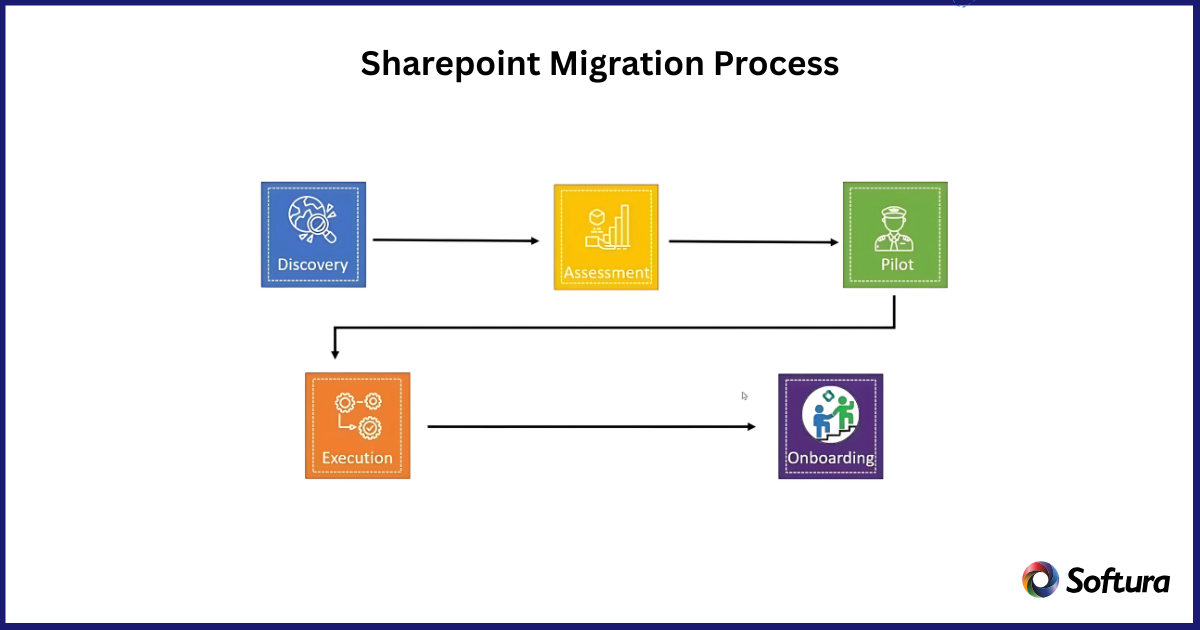"Our integration with the Google Nest smart thermostats through Aidoo Pro represents an unprecedented leap forward for our industry."
- Antonio Mediato, founder and CEO of Airzone.
SharePoint Migration Services aren’t just about platform upgrades; they represent a business-critical transformation.
For enterprises in regulated industries like manufacturing, healthcare, finance, or legal, it’s not just about moving files. It’s about redefining how your teams collaborate, how your data is governed, and how compliant your operations stay post-migration.
One misstep, such as missed permissions, broken metadata, or lost version history, can lead to audit failures, operational disruptions, or user revolt. Yet many organizations still treat SharePoint migration as a one-off IT project. They rush into tools, overlook governance, and underestimate business complexity.
This blog outlines the five steps industry leaders follow, supported by expert SharePoint Migration services to ensure their migration delivers security, scale, and strategic value.
Before you move a single document, define the “why” and “how.” Migration without vision leads to fragmented sites, siloed data, and poor adoption. Start by identifying business goals: streamline collaboration, enable remote access, reduce compliance risk, or integrate workflows. Then build your governance framework.
This includes:
Leadership Insight: A global financial services firm recently mapped its entire migration strategy around audit-readiness by first defining governance; it reduced access violations by 80% post-migration.

"Our integration with the Google Nest smart thermostats through Aidoo Pro represents an unprecedented leap forward for our industry."
- Antonio Mediato, founder and CEO of Airzone.
Not every file deserves a ticket to the cloud. Start with a full audit. Identify which documents are relevant, valuable, or sensitive. Flag ROT (redundant, outdated, trivial) data. Separate archival records from active collaboration files. This phase saves cost, reduces clutter, and avoids risk exposure.
Use tools like ShareGate or AvePoint to:
Expert Move: In one healthcare migration, the content audit revealed over 40% of files had not been accessed in 3 years, removing them upfront saved both storage and compliance complexity.
Your new SharePoint environment should be built to last and to grow. Do not just recreate old folder structures. Use this opportunity to modernize information architecture. Group content by function, not department. Use modern SharePoint hubs, libraries, and metadata tagging.
Key technical considerations:
Compliance Focus: In regulated sectors, proper architecture helps prove who accessed what, when, and prevents unauthorized sharing.
"By analyzing the data from our connected lights, devices and systems, our goal is to create additional value for our customers through data-enabled services that unlock new capabilities and experiences."
- Harsh Chitale, leader of Philips Lighting’s Professional Business.
Avoid the big bang approach. Migrate in waves, starting with low-risk content or a single business unit.
Select the right tool based on your needs:
Steps to follow:
Real-World Case: A legal enterprise conducted pilot migrations with two practice groups first, which uncovered hidden permission issues early, avoiding firm-wide disruption.
Ready to Modernize Your SharePoint Platform?
Let Softura help you build scalable, future-ready solutions tailored to your business.
"By analyzing the data from our connected lights, devices and systems, our goal is to create additional value for our customers through data-enabled services that unlock new capabilities and experiences."
- Harsh Chitale, leader of Philips Lighting’s Professional Business.
Migration success is not about the cutover; it is what happens next. Train users on how SharePoint works differently from file shares. Enable helpdesk support. Monitor usage and flag behaviors that violate governance. Use analytics (via Microsoft 365 admin center) to track adoption.
Key actions:
Long-Term ROI: SharePoint development services can extend value post-migration—by automating document approvals, integrating with CRM/ERP, and scaling sites as business grows.
Even with tools in hand, migration is complex.
SharePoint development experts:
Think of them not as tool operators, but as strategic partners who turn a technical project into an enterprise solution.
A successful SharePoint migration is not about moving content. It is about modernizing collaboration, securing knowledge, and enabling smarter work. For regulated industries, the stakes are even higher. With the right strategy and the right experts, you do not just migrate. You evolve.
Ready to modernize with confidence? Discover how SharePoint migration services can help you reduce risk and maximize value.
Exploring SharePoint Development Services?
Get expert guidance to modernize collaboration, automate workflows, and strengthen compliance.
You may face broken permissions, lost metadata, failed compliance audits, and poor user adoption, especially in complex or regulated environments.
Large enterprises typically take 3–6 months, depending on content volume, tool selection, and business readiness.
Yes, but it's often better to redesign using libraries, metadata, and hubs. Experts can map and modernize your structure intelligently.
They help customize workflows, build integrations (ERP, CRM), automate governance, and ensure long-term scalability and compliance.